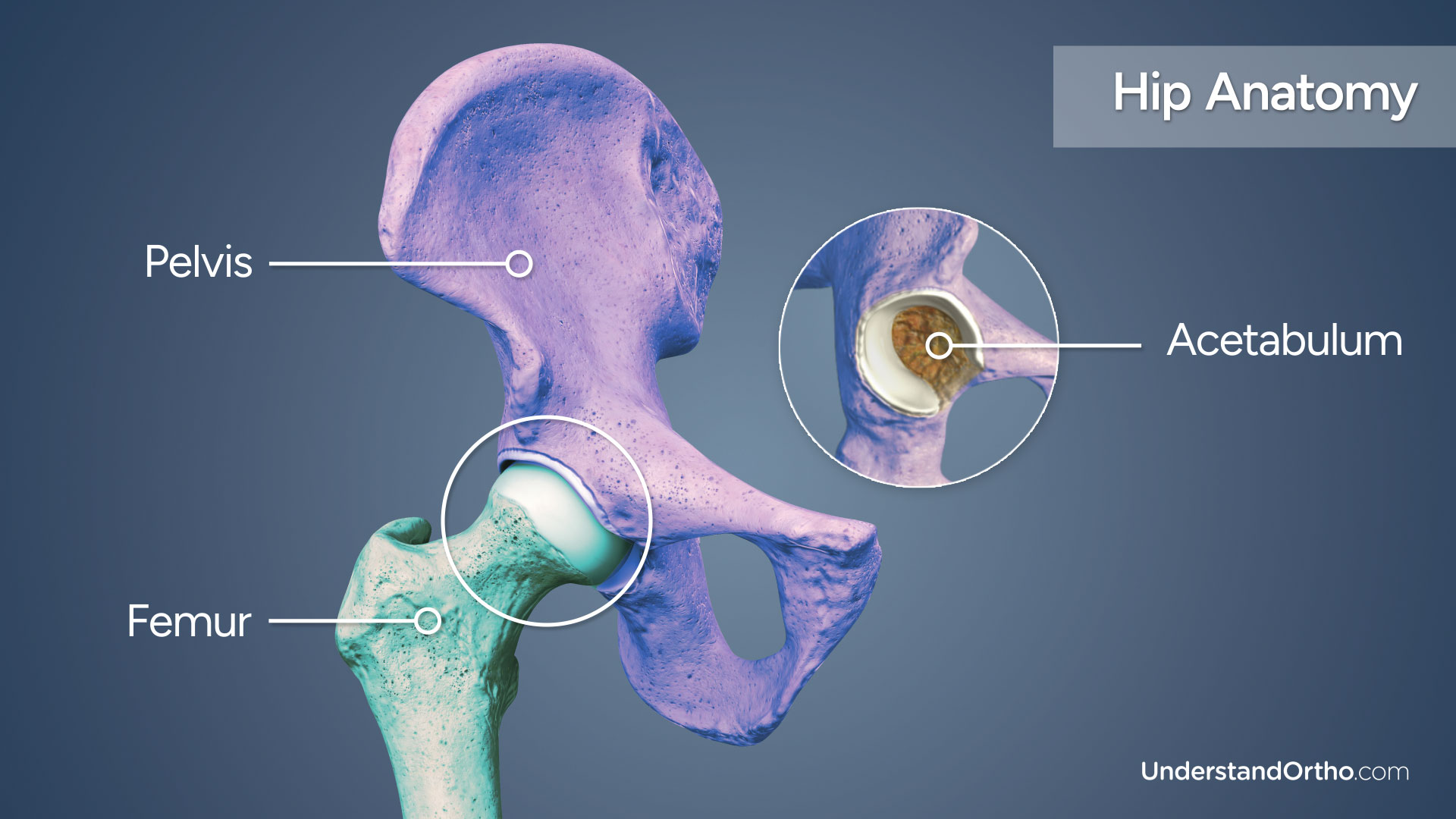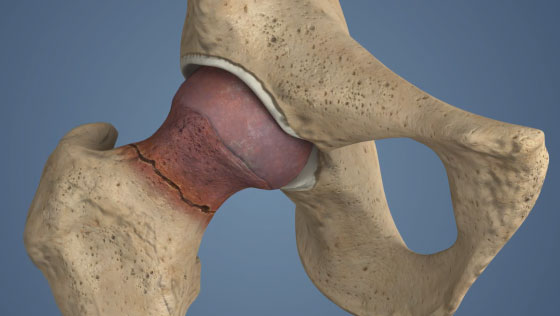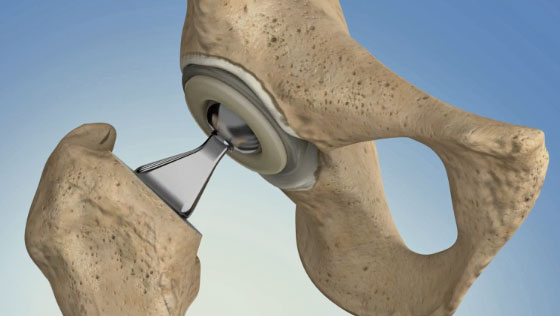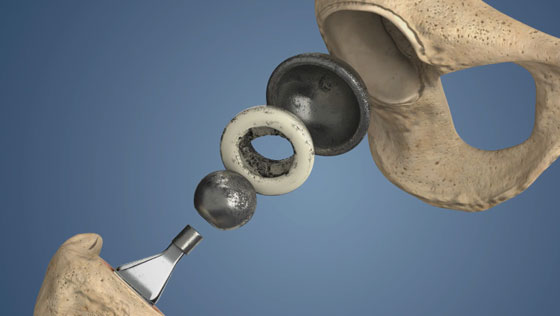What is Anterior Hip Replacement?
Anterior hip replacement (also known as anterior approach hip replacement or a mini hip replacement) is a surgical procedure performed as an alternative to total hip replacement during which damaged portions of the hip are replaced with an artificial implant. During an anterior hip replacement, the hip joint is accessed anteriorly, or from the front, versus the more common posterior approach of a conventional total hip replacement.
Key statistics about Anterior Hip Replacement
- Approximately 25% of individuals will develop arthritis in at least one hip by the age of 85[1]
- Patients who undergo elective total hip replacement are on average 66 years old[2]
- In the first year after surgery, the anterior approach to total hip replacement has a lower joint dislocation rate compared to the posterior approach[3]
- 93% of patients who undergo total hip replacement experience meaningful improvement in joint pain and function[4]
- More than 99% of hip replacements will last for 10 years[5]
Expert Insights
Will I do more damage if I wait to have my hip replaced? - Bradford S. Waddell, MD
Hip Anatomy
The hip is a ball-and-socket joint formed by two bones: the femur and the pelvis. The head of the femur rests in the socket of the pelvis, also called the acetabulum.
Articular cartilage covers the ends of the bones, reducing friction as the hip moves.

Why is Anterior Hip Replacement performed?
Anterior hip replacement is performed primarily to relieve pain and stiffness caused by arthritis. Arthritis occurs as the cartilage that cushions the hip wears down, causing the bones to grind against each other. This results in pain and inflammation, and can lead to bone deformity and a loss of joint mobility. When the cartilage damage from arthritis is so severe that it cannot be treated with repair or nonsurgical means, a total hip replacement is performed.
The anterior procedure accesses the joint from the front of the hip and is sometimes called a mini hip replacement because it uses an incision that can be as small as 3-4 inches. It may also be called a muscle-sparing hip replacement because it doesn’t require detaching or cutting muscles or tendons.
In contrast, a conventional total hip replacement procedure accesses the hip joint from the back (posterior), utilizes a larger incision, and involves the cutting of muscles and tendons. A partial hip replacement also may be an option for patients with certain types of hip fractures.
Who needs Anterior Hip Replacement?
Approximately 25% of individuals will develop arthritis in at least one hip by the age of 85[1].
Arthritis may be the result of normal wear and tear due to aging (osteoarthritis), or may be caused by a hip injury (post-traumatic arthritis) or autoimmune disorder (rheumatoid arthritis).
Anterior hip replacements are not ideal for every patient. People with very fragile bones may not be good candidates for the procedure, and another approach with a larger incision may be required for people who are very muscular or obese. Similarly, the posterior approach may be a better option for patients with an abnormally shaped acetabulum, those who require bone grafting, and people with instrumentation and hardware from prior hip surgery.
How is Anterior Hip Replacement performed?
- The surgeon will make an incision at the front of the hip to access the joint.
- The head and neck of the femur is removed and the damaged cartilage of the acetabulum is removed.
- A metal socket is attached to the acetabulum and the femoral implant is placed into the bone and a metal or ceramic ball is used to replace the femoral head.
- Finally, the incision will be closed with sutures or surgical staples.

What are the risks of Anterior Hip Replacement?
It is uncommon to experience complications from anterior hip replacement, but potential risks may include:
- Infection
- Blood clots
- Nerve or blood vessel damage
- Hip dislocation
- Malposition of the implants
- Loosening or wearing down of the implant over time
How long does it take to recover from Anterior Hip Replacement?
-
24 hours after surgery
A physical therapy routine will be established by the surgeon and physical therapist, and pain medication may be prescribed. -
1-3 days after surgery
Most patients are discharged from the hospital and will be able to walk with crutches, a cane, or walker. -
2 weeks after surgery
Any non-dissolvable sutures and staples are removed and bruising and swelling begin to subside. -
3-6 weeks after surgery
Most patients are able to resume most daily activity. -
2-6 months after surgery
Most patients are fully recovered from anterior hip replacement.
What are the results of Anterior Hip Replacement?
Anterior hip replacement is a safe and effective procedure to treat end-stage arthritis and improve quality of life for a wide variety of patients. Patients who undergo anterior hip replacement usually experience better mobility, fewer activity restrictions, and a shorter recovery time than patients who undergo other hip replacement procedures. 93% of patients who undergo total hip replacement experience meaningful improvement in joint pain and function4 and more than 99% of hip replacements will last for 10 years[5]. In younger patients, this may mean the need for a revision hip replacement to reaffix or replace the implant components.
Find an Orthopedic Doctor in Your Area





